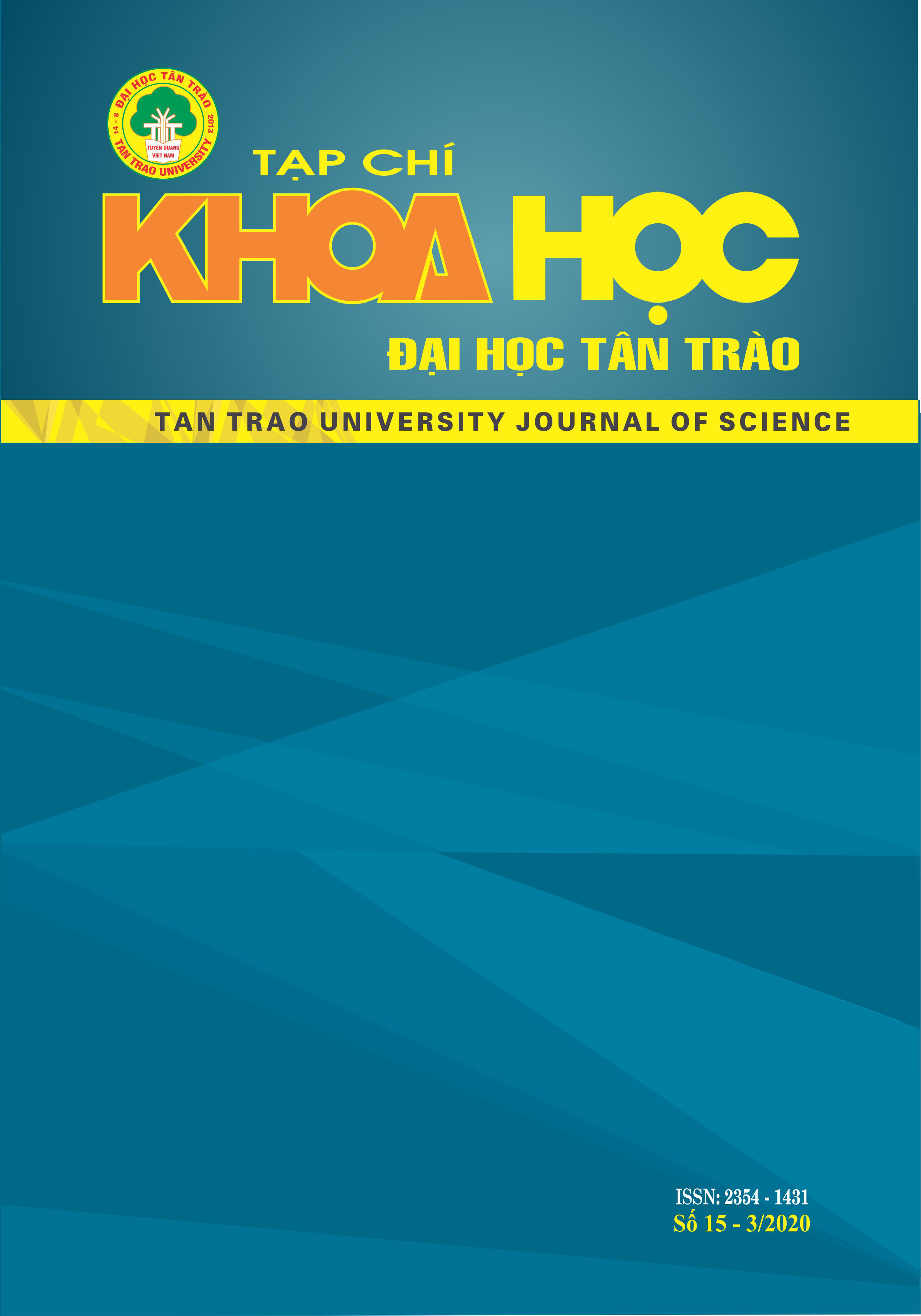Truyền thuyết về sự phá hủy của thành phố Nonghan: Thủ đô văn hóa du lịch của lưu vực Nonghan, tỉnh Sakon Nakhon, Thái Lan.
DOI:
https://doi.org/10.51453/2354-1431/2019/276Từ khóa:
Huyá»n thoại của thà nh phố bị phá hủy Nonghan, Thủ đô văn hóa, lÆ°u vá»±c NonghanTóm tắt
Nonghan, tỉnh Sakon Nakhon là hồ nước ngọt lớn thứ hai ở Thái Lan. Nó có lịch sử lâu đời, xuất hiện trong các truyền thuyết như: truyền thuyết con nai trắng (ตำนานเก้งเผือก), truyền thuyết con sóc trắng (ตำนานกระรอกด่อน), chuyện cổ tích xương ngực Đức Phật (อุรังคธาตุนิทาน). Nhà nghiên cứu đã thu thập các câu chuyện dân gian xung quanh lưu vực Nonghan và sử dụng để phân tích theo phương pháp luận trong văn hóa dân gian. Bài viết này nhằm mục đích nghiên cứu các câu chuyện thần thoại và truyện dân gian mô tả lịch sử của Nonghan và sự sụp đổ đã trở thành một đầm lầy lớn.
Nghiên cứu cho thấy truyền thuyết nai trắng là một truyền thuyết xuất hiện trong niên sử của tỉnh Sakon Nakhon. Nó giải thích nguyên nhân khiến mặt đất chìm xuống trở thành một đầm lầy lớn gây ra nhiều hòn đảo nhỏ khác nhau dẫn đến những câu chuyện lịch sử và văn hóa của tỉnh Sakon Nakhon. Bên cạnh đó, truyền thuyết con sóc trắng cũng mô tả sự sụp đổ của thành phố, Ekchathita đã trở thành một đầm lầy lớn vì mọi người ăn thịt sóc trắng. Hơn nữa, chuyện cổ tích xương ngực Đức Phật (truyền thuyết Phra That Phanom) cũng mô tả sự thịnh vượng của Nonghan và sự sụp đổ của thành phố. Đối với văn học của Pha Daeng Nang Aii, nó cũng giải thích sự sụp đổ của thành phố Nonghan. Nghiên cứu này phản ánh câu chuyện về niềm tin và sự linh thiêng của nơi xuất hiện trong câu chuyện lưu vực Nonghan của tỉnh Sakon Nakhon được sử dụng làm thủ đô văn hóa để phát triển du lịch sinh thái bền vững trong lưu vực Nonghan.
Tải xuống
Tài liệu tham khảo
1. Khunsrinakornranurak (1920). Mueng Sakon Nakhon Legend, reprinted as a commemoration of the royal funeral of Deputy Amat Ek Phra Anubansakonket (Mek Phrommasaka), Sakon Nakhon: Sophonphiphattanakorn Press.
2. Preecha Pinthong (1981). Pha Daeng-Nang Ai. Ubonratchatanee: Sirithum Press.
3. Suphon Somchipanya (1981). The Influence of Local Literature on Pha Daeng - Nang Ai on the beliefs, traditions and festivals affecting to northeastern society. The research project of the Cultural Center of the Mahasarakham Teacher’s College in collaboration with the Supervisor Unit, Department of Teacher Training, Ministry Education.
4. Siriwat Khumwansa (1979). Tao Pha Daeng - Nang Ai and fireball festival. Bangkok: Ministry of Education.
5. Sukanya Suchaya (1996). Pha Daeng - Nang Ai, Was Record of Lawa, Khmer and Naga. Acient City Journal, Year 42, Issue 1 (Jan - March 2016) Page 97-1002.
6. Sarawut Thongkhumsai (1986). Analytical study of Isan literature on Pha Deang – Nang Ai. Master Degree Thesis, Thai Language, Graduate School, Srinakharinwirot University, Phitsanulok.
7. Somsak Sengsai (1991). Names of the cities which appeared in the literature about Pha Daeng – Nang Ai. Master of Science in Thai Studies, Graduate School of Srinakharinwirot University.
8. Surachai Chinnabutr (2016). Urangkatat, Tales of the Legend of King Liabloke, Isan Lan Chang edition: Inheritance and creation. Thai Journal of Education, year 12, Issue 1 (January - June) 2016.
9. Ariyanuwat Khemachari (1981). Pha Daeng – Nang Ai. Mahasarakham, Faculty of Humanities, Srinakharinwirot University, Mahasarakham.
Tải xuống
Đã Xuất bản
Cách trích dẫn
Số
Chuyên mục
Giấy phép

Tác phẩm này được cấp phép theo Giấy phép Quốc tế Creative Commons Attribution-ShareAlike 4.0 .
Bài báo được xuất bản ở Tạp chí Khoa học Đại học Tân Trào được cấp phép theo giấy phép Ghi công - Chia sẻ tương tự 4.0 Quốc tế (CC BY-SA). Theo đó, các tác giả khác có thể sao chép, chuyển đổi hay phân phối lại các bài báo này với mục đích hợp pháp trên mọi phương tiện, với điều kiện họ trích dẫn tác giả, Tạp chí Khoa học Đại học Tân Trào và đường link đến bản quyền; nêu rõ các thay đổi đã thực hiện và các nghiên cứu đăng lại được tiến hành theo cùng một bản quyền.
Bản quyền bài báo thuộc về các tác giả, không hạn chế số lượng. Tạp chí Khoa học Tân Trào được cấp giấy phép không độc quyền để xuất bản bài báo với tư cách nhà xuất bản nguồn, kèm theo quyền thương mại để in các bài báo cung cấp cho các thư viện và cá nhân.
Mặc dù các điều khoản của giấy phép CC BY-SA không dành cho các tác giả (với tư cách là người giữ bản quyền của bài báo, họ không bị hạn chế về quyền hạn), khi gửi bài tới Tạp chí Khoa học Đại học Tân Trào, tác giả cần đáp ứng quyền của độc giả, và cần cấp quyền cho bên thứ 3 sử dụng bài báo của họ trong phạm vi của giấy phép.






